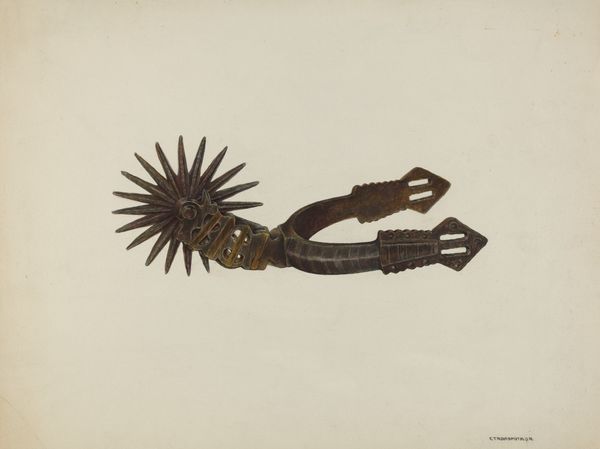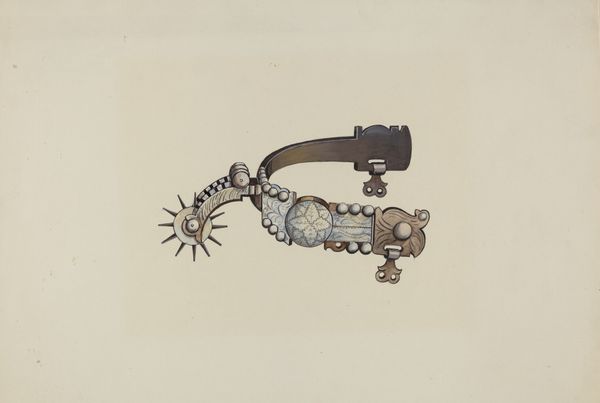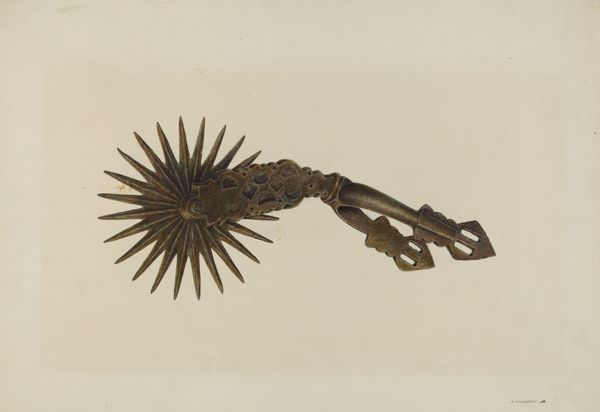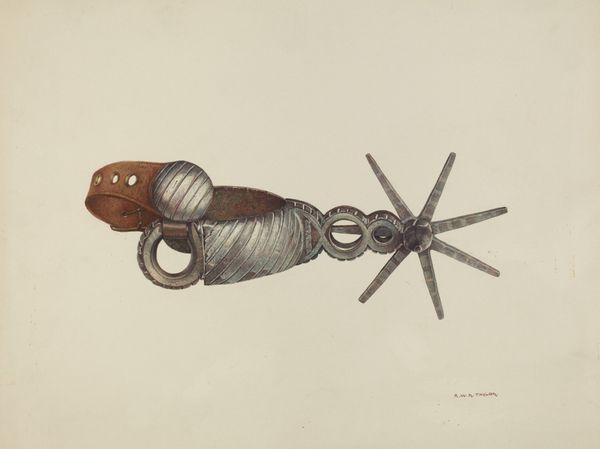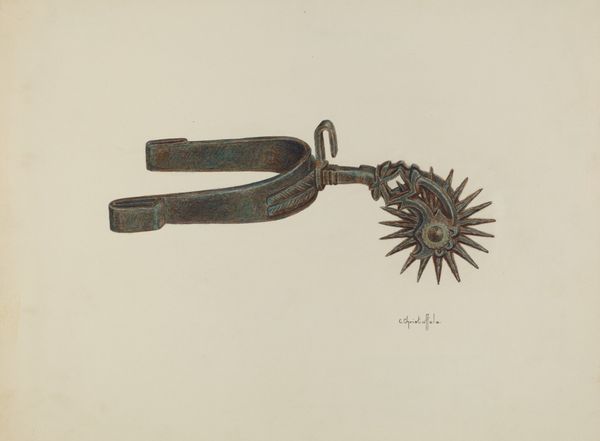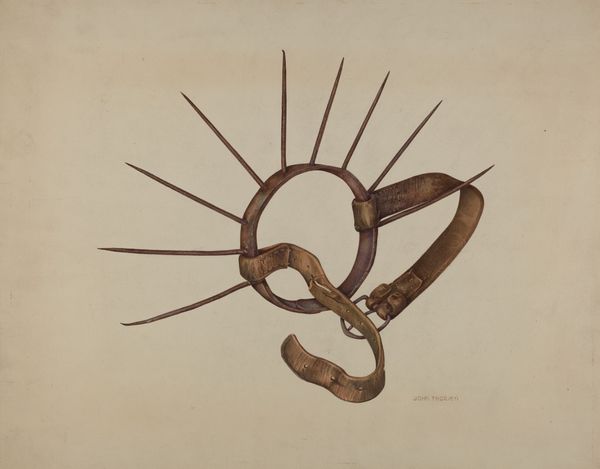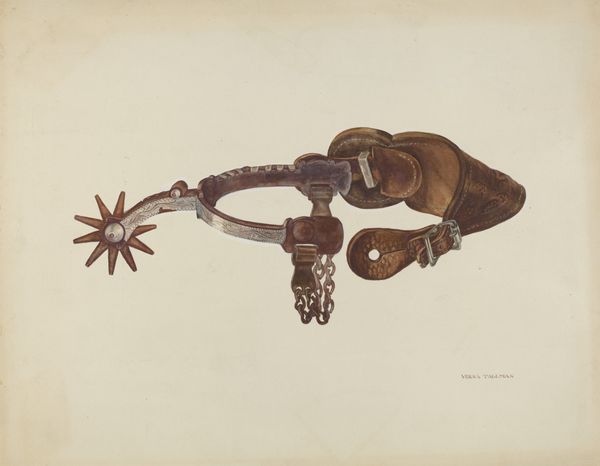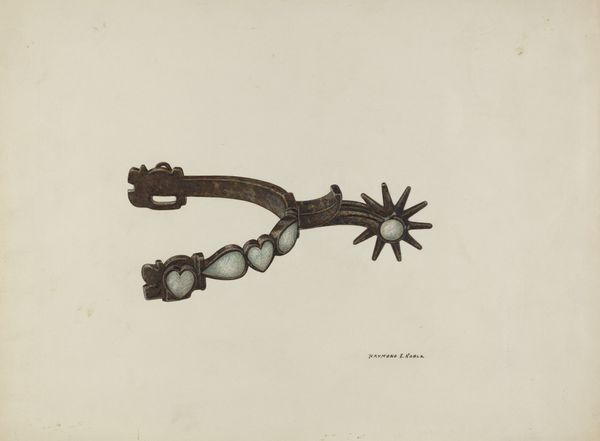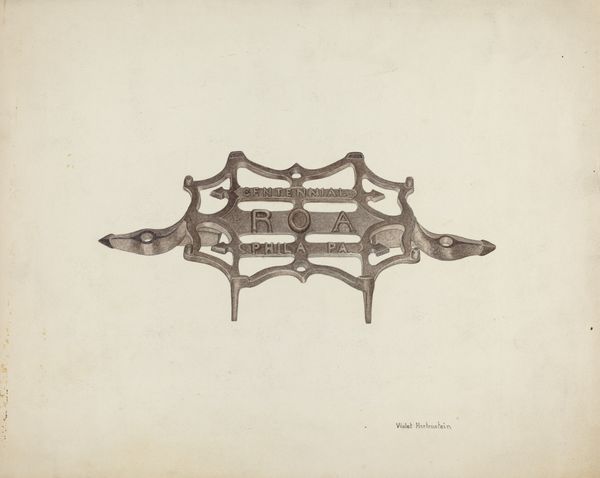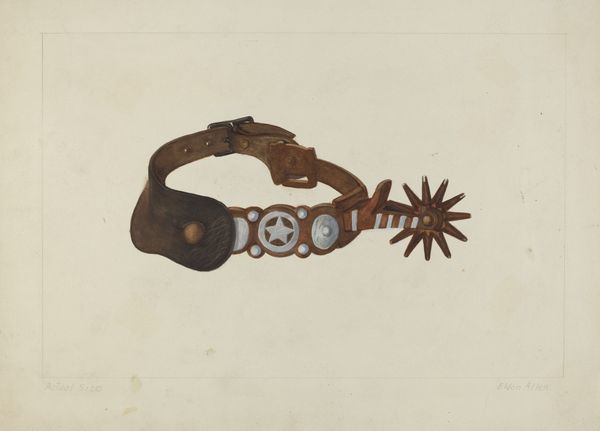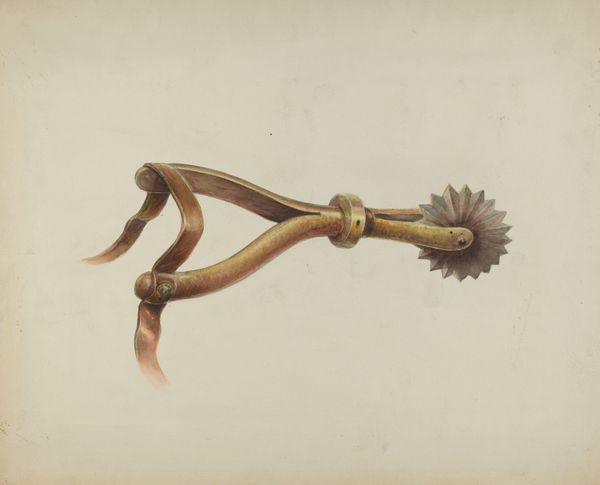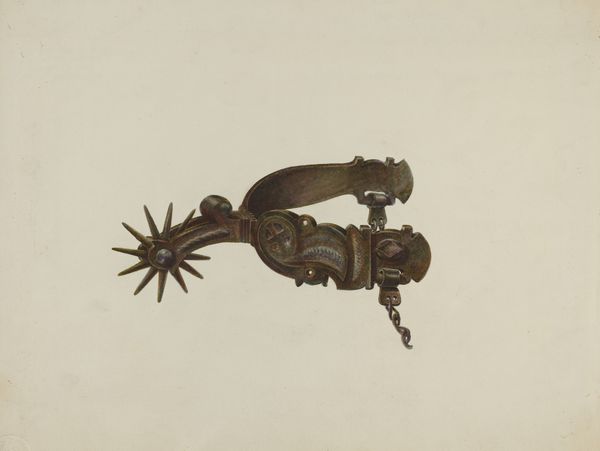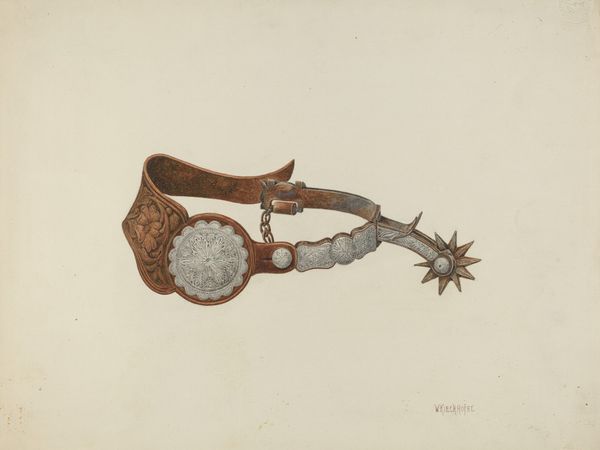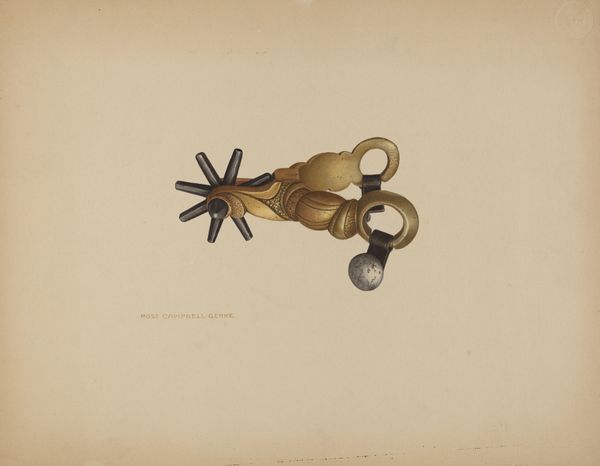
drawing, pencil
#
pencil drawn
#
drawing
#
pencil drawing
#
geometric
#
pencil
#
line
#
academic-art
Dimensions: overall: 27.9 x 35.4 cm (11 x 13 15/16 in.) Original IAD Object: 9 3/4" long; 4 5/8" in diameter
Copyright: National Gallery of Art: CC0 1.0
Editor: Here we have "Spur," a pencil drawing made around 1939 by Emile Cero. The craftsmanship seems incredibly detailed; you can almost feel the texture of the metal. What stands out to you most in this work? Curator: What I notice is the intersection of craft, labor, and functionality. This isn’t just a drawing of a decorative object, but of a tool. Its production implies a whole system – from the mining of the metal, the blacksmith's labor, to the cowboy’s use and the eventual market. What do you think the choice of pencil drawing as a medium signifies here, compared to say, photography? Editor: I guess a photograph might seem more documentary, more objective? The pencil drawing, because it's handmade, seems to emphasize the human labor involved in both the creation of the spur and the artwork itself. So it almost elevates what would otherwise be viewed as a practical, even mundane, object into something worthy of artistic attention. Curator: Precisely! Consider the context too. The late 1930s was a period of economic hardship. Does representing this spur – an item associated with ranching and the "Wild West" – connect to larger conversations about American identity, production, and value at that time? Editor: It makes me wonder if it's meant to idealize the past when labor was more… tangible? Before mass production, perhaps? I am seeing how all those different elements can be pulled together. Curator: It allows us to think about how value is constructed, not just in art, but in everyday objects and labor itself. Editor: I’ll never look at a pencil drawing of a tool the same way again! Curator: That’s the power of looking closely at the materials and their context.
Comments
No comments
Be the first to comment and join the conversation on the ultimate creative platform.
